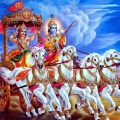Welcome home! Please contact lincoln@icrontic.com if you have any difficulty logging in or using the site. New registrations must be manually approved which may take several days. Can't log in? Try clearing your browser's cookies.
Speed or rhythm of chanting mantra?
 Jainarayan
Veteran
Jainarayan
Veteran
Something I could never quite get my head around, and is probably the reason I don't derive much from mantra (nama) japa is the speed or rhythm. I'm never quite sure whether to draw a breath before each repetition and exhale on the repetition, necessitating a silence between repetitions, or simply chanting the mantra regardless of the breathing pattern. I know breathing meditation and mantra japa are not necessarily the same. Sometimes I find I have to slow myself down because I an reciting too fast. What's the typical rhythm or speed?
0

Comments
Breathing isn't really a big deal either AFAIK. If you recite a mantra or sutra, you get into a steady pace where you find good places to breathe, but it takes time.
You're not going to lose points just be breathing in the wrong place or being out of rhythm.
My thought is, when in doubt ... do it anyway.
Vajrayana is sometimes described as mantrayana. It is that useful. In many ways the learning of gradually slowed down breathing patterns is part of a mind calming. This is achieved but not forced by doing mantras on an out breath in the initial phases.
As mantra reciting becomes quieter, it indicates ones internal mind state. Then when totally silent it becomes an object of mind focusing and aligning with an attribute.
Mantra is a path. :wave:
It varies from student to student because we have various needs. Some need calming, others need stimulating. A real teacher knows which.
Bozos like me on forums, who have never met you, do not.
There is a whole dimension to Mantra practice which is not accessible by trial and error.
He doesn't even require you to change your religious affiliation.
If you are interested PM me.
_/\_
_/\_